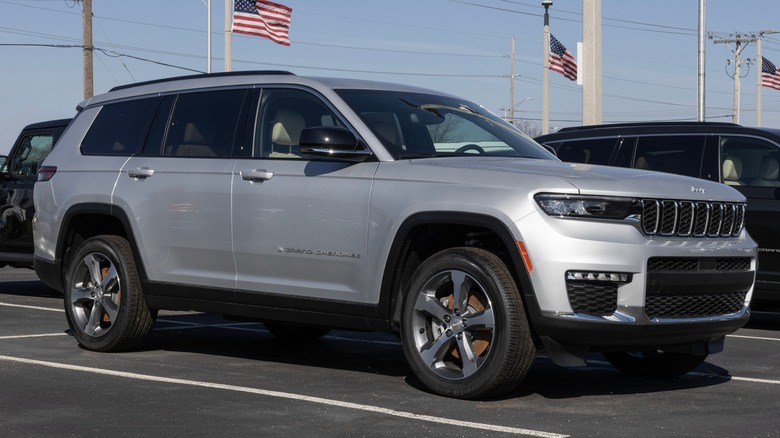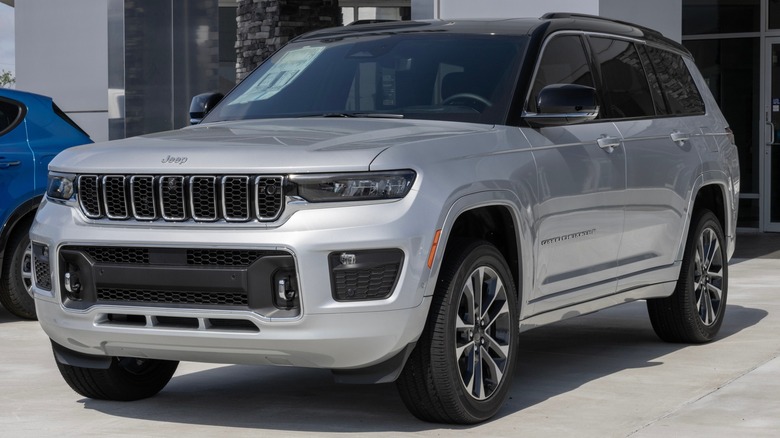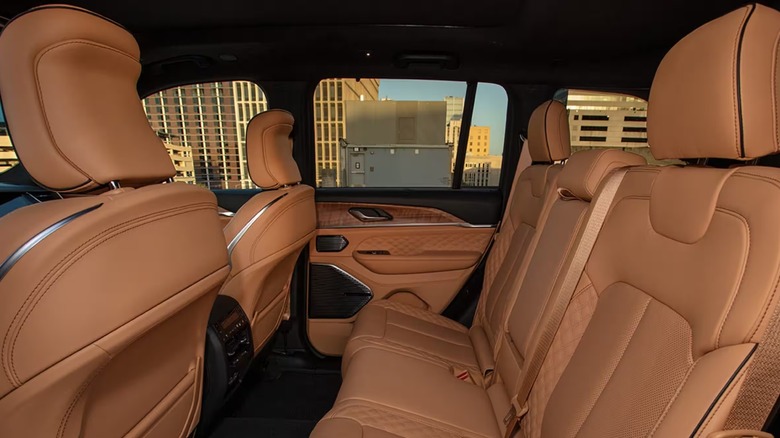Jeep Grand Cherokee Limited Vs. Overland: What's The Difference?
The Jeep Grand Cherokee is one of America's best-selling midsize SUVs, according to Kelley Blue Book. In response to demand, its 2024 two-row configuration is offered in nine trim levels, ranging from the relatively basic Laredo A to the impressively luxurious Summit Reserve. The Limited and Overland editions fall in the middle-to-upper range of all these trims.
The Limited and Overland are available with two or three rows of seating for five or seven passengers, with the 3-row extended version called Grand Cherokee L. Both are equally capable on or off-road, with the same exterior color choices, fuel economy of 19 mpg city and 26 mpg highway, max payload/towing rating of 6,200 pounds for the base configuration, and a 3.6L V6 24V VVT Engine and 8-Speed Automatic 8HP50 Transmission. In fact, most of the Overland's standard driving and safety features are also standard for the Limited. So, what explains why the Limited's MSRP starts at $47,905 but the Overland starts at $60,995? Let's take a look at the differences.
Big exterior differences, from the nose to the lift gate
Side by side, the first thing that sets these two Grand Cherokee trims apart is the different lower grilles. The Overland sports front tow hooks, front corner LED lamps, and exterior front lighting animation that the Limited doesn't, as well as 20-inch x 8.5-inch machined face aluminum wheels. Also, the Limited is available with a 4x2 or a 4x4 drive train, while the Overland only comes in one flavor: 4x4.
You'll find many standard exterior features on the Overland that aren't even offered as options for the Limited, such as windshield wiper de-icer and hill descent control for trips to the snow. Stylish gloss-black roof rails and painted wheel flares and door cladding help set its looks apart, while the hands-free power lift gate is simply handy. For extra visibility at night, the more expensive trim has door courtesy and proximity approach lamps — even on the exterior mirrors. The memory mirrors also power-fold automatically, tilt in reverse, and signal turns.
Together, these features give the Overland nicer city manners for parking and maneuvering around other vehicles on the road. In contrast, the Limited's unpainted wheel flairs and door cladding make it look more ready for mud and off-road adventure.
Each trim offers standard features that the other doesn't
The Overland's standard interior features make an upscale impression, with a few other details not available on a Limited, including multi-color ambient LED interior lighting and rear-footwell courtesy lamp, and an automatic-dimming rear-view mirror to cut the glare from others' headlights. Drivers are treated to a 12-way power adjustable seat with back-massager, while the front row passenger seat has memory and back-massager. Everyone on board gets Napa leather seats.
It might seem like Limited buyers are getting a lesser SUV, but it has its own standard features not available with the other trim, starting with two interior color choices — Global Black or Global Black with Wicker Beige. The Overland interior is, well, limited to black. Nor does Overland have the Limited's memory heated mirrors with turn signals, LED low beam daytime running lamps, ParkSense rear park-assist with stop, front door and lift gate passive entry and lock, or power front windows with one-touch up/down. For style points, Limited even has an accent-color shark fin antenna to complement its cladding.
The last major difference between the slightly sportier-looking Limited and the more polished Overland? Only the latter is available as a PHEV, the 2024 Grand Cherokee Overland 4xe. Regardless of which trim is chosen, it will keep drivers swaddled in features to make driving safer, more comfortable, and more fun.


